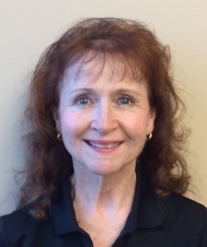
ABOUT THE INTRODUCTION TO SAFE PATIENT HANDLING
This online course is designed as an essential resource for those in the healthcare industry as well as for anyone involved with Safe Patient Handling.
In this three contact hour course presentation you will review principles, solutions and opportunities for improvement regarding Safe Patient Handling in all types of healthcare environments. Skills learned will include the correct methods for setting up and sustaining a world class Safe Patient Handling Program.
You will learn that a successful Safe Patient Handling Program guarantees the best patient care outcomes and enhances employee safety in the healthcare workplace.
The overall goal is to provide you with the expertise for the development and maintenance of a successful and sustainable Safe Patient Handling Program for all healthcare environments with a focus on patient care, employee safety and Return on Investment.
The time frame for completing the online course is 30 days for each participant. 3 Contact Hours CE.
COURSE OBJECTIVES
Identify Safe Patient Handling principles and challenges in the workplace
Outline facts and figures related to healthcare workers and Musculoskeletal Disorders
Confirm how we compare to other countries in Safe Patient Handling
Explain the effects of prolonged bed rest
Investigate the functional importance of a Mobility Assessment and how to perform a Mobility Assessment
Select the correct assistive equipment
Design a framework for a Safe Patient Handling Program
*CEUs:
This course is currently pre-approved for Continuing Education CEs by the BOC and COPSKT. The Back School is also an AOTA Approved Provider (#4849) and is authorized to offer AOTA 3 contact hours for this class. AOTA Classification Codes: Category 1: Domain of OT & Category 2: Occupational Therapy Process. The assignment of AOTA CEUs does not imply endorsement of specific course content, products, or clinical procedures by AOTA
This and many of our courses are currently or have in the past been pre-approved for continuing education credit by most state PT boards. Other specialities/professional disciplines should be able to submit for individual credit but it is important for you to contact your state licensing board or professional credentialing board for information regarding policies and the amount of continuing education credits allowed for online courses.
COURSE COMPLETION REQUIREMENTS
View the Workshop Presentation Modules. Take and pass a 30-question exam with a 90% correct score.
Who Should Register
PTs, PTAs, PT Students, OTs, OTAs, OT Students, CHTs, ATs, RNs, NPsCertified Safety Professionals, Risk Managers, Claims Managers, Safety Committee MembersHuman Resources Professionals, Industrial Engineers, Industrial Hygienists, ErgonomistsAthletic Trainers, Chiropractors, Office Furniture Sales and anyone wanting to learn how to decrease risk of onsite employee injury and increase employee productivity and satisfaction.
THESE COPYRIGHTED MATERIALS ARE FOR REGISTRANTS ONLY. BY REGISTERING YOURSELF OR SOMEONE ELSE FOR THIS COURSE YOU AGREE THAT YOU WILL NOT SHARE THESE MATERIALS WITH ANY THIRD PARTY.
REFUND POLICY
Refunds are not available for distance learning courses.
Testimonial
"Excellent content with supporting visuals and videos."
R.R., Risk Mgr., Lancaster, CA
Testimonial
"Great content!"
D.M., PT, Salt Lake City, UT
Jeanne Spangler, PT, CEAS II

Jeanne Spangler is a licensed Physical Therapist who has spent the majority of her career in Outpatient Orthopedics. She has worked as a clinician and in management of multiple Hospital Departments and in Private Practice since 1977. She is currently Manager of Outpatient Rehabilitation and Sports Medicine for Houston Methodist West Hospital in Houston, Texas. She has served in past and currently as a member of the Hospital Employee Injury Review Board and Safety sub- Committee for the Environment of Care. She is working with the Nursing Magnet Committee on Employee Injury Prevention toward a Comprehensive Safe Patient Handling Program and performs workstation ergonomic evaluations for Hospital employees.
She graduated from the University of Oklahoma and is a member of the American Physical Therapy Association and Texas Physical Therapy Association.
MODULE 1: INTRODUCTION & DEFINING ERGONOMICS AND SAFE PATIENT HANDLING
- Ergonomics in healthcare and patient handling
- Benefits of safe patient handling
- Paradigm shift
MODULE 2: FACTS AND FIGURES FOR HEALTHCARE WORKERS REGARDING MUSCULOSKELETAL DISORDERS
- Ergonomics risk factors in healthcare
- Statistics related to injuries in healthcare
- Contributing factors for increased injuries in healthcare
MODULE 3: MYTHS & FACTS
- Myths and facts on safe patient handling
- OSHA guidelines for nursing homes and acute care
- Facts that need to be reinforced
MODULE 4: EFFECTS OF BEDREST
- Benefits of mobilization of the patient
- Effects of bedrest on circulatory and respiratory systems
- Effects of bedrest on integumentary and digestive/excretion
- Effects of bedrest on metabolism/hormones and neurological system
MODULE 5: MOBILITY ASSESSMENT AND SAFETY CONSIDERATIONS
- Elements of the patient transfer/mobility assessment
- Safety considerations
- Rules to reduce risk for patient transfer/mobility
- Power Zones
MODULE 6: ASSISTIVE EQUIPMENT
- Assistive equipment for safe patient handling
- When to use what type of equipment
- How much equipment is needed
- Algorithms for safe patient handling equipment use
MODULE 7: DEVELOPING A SAFE PATIENT HANDLING PROGRAM
- Program development to mitigate risk for patients and employees
- Promoting a safety minded environment and getting hospital management on board
- Capital investment and return on investment (ROI)
- Evidence-based safe patient handling programs



